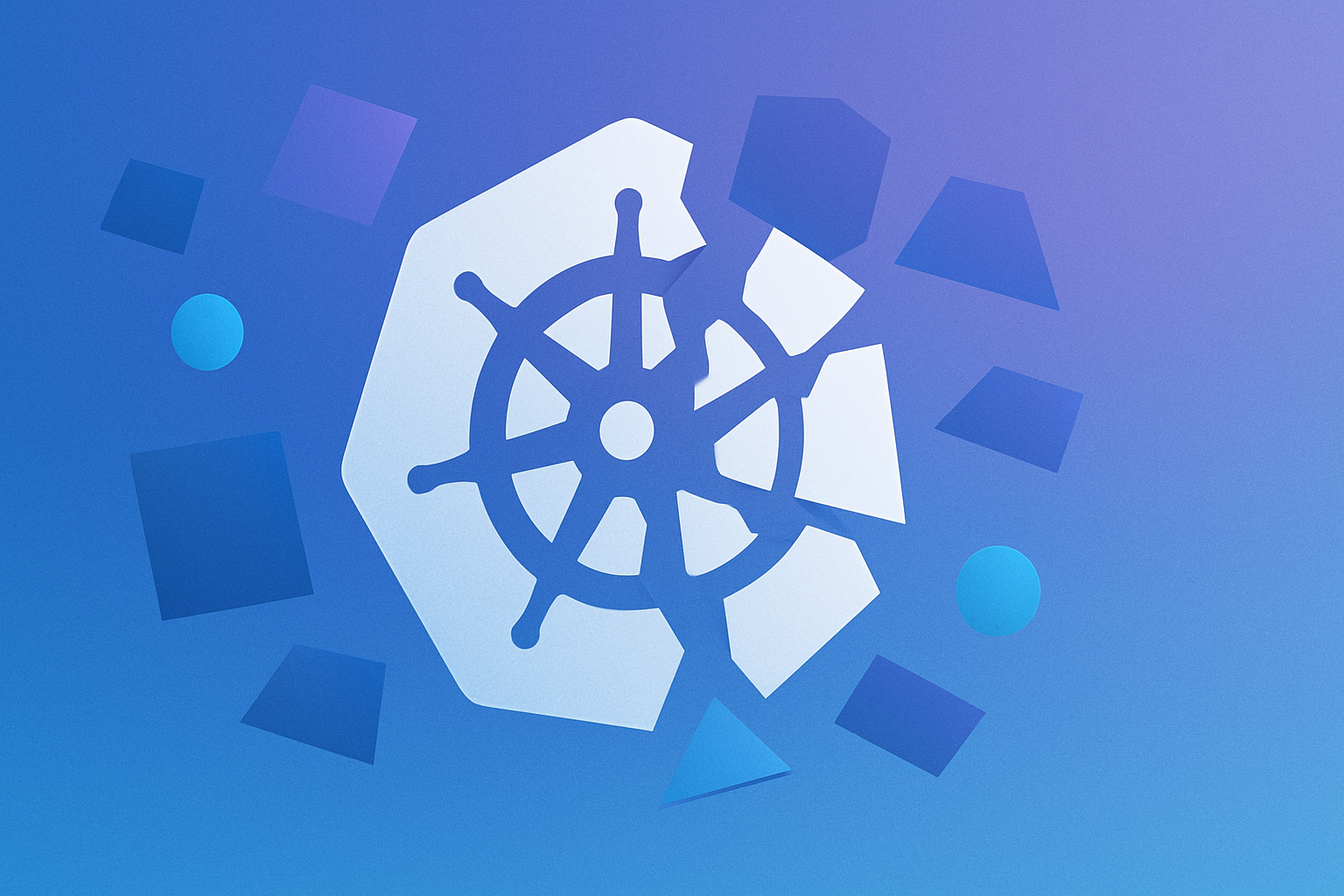Docker has revolutionized how developers build, ship, and run applications by providing a standardized unit of software: containers. A Dockerfile is a script containing a series of instructions for how to build a Docker image. However, Dockerfile errors can be frustrating, and one such error is the “failed to solve with frontend dockerfile.v0” error. This post will help you understand this generic error message, provide step-by-step guidance on diagnosing and fixing it, and offer tips to prevent it in the future.
Understanding the “Failed to Solve with Frontend Dockerfile.v0” Error
The “failed to solve with frontend dockerfile.v0” error is a generic error message encountered during the build process of a Docker image. It always points to another underlying issue, such as syntax or structural problems in the Dockerfile or issues within the build context.
Identifying common causes
1. Syntax Errors in Dockerfile
Syntax errors in a Dockerfile are among the most frequent causes of build failures. These errors can stem from various issues, including the following:
- Missing commands: Omitting required commands such as FROM, RUN, COPY, or CMD.
- Incorrect order of instructions: Dockerfile instructions should follow a logical sequence. For example, copying application files before setting the working directory can cause errors.
- Typographical errors: Simple typos in command names or parameters, such as writing WORKDIR as WRKDIR, can disrupt the build process.
- Improper use of arguments and variables: Incorrectly defining or using ARG and ENV variables can lead to build failures.
- Mismatched quotation marks: Unbalanced quotes in commands or instructions.
2. Build Context Issues
The build context includes all the files and directories sent to the Docker daemon when building an image. Common build context issues include the following:
- Missing files: The build will fail if the Dockerfile references files that are not present in the build context.
- Incorrect paths: Specifying incorrect paths in COPY or ADD instructions can result in errors. Always use relative paths based on the build context.
- Large context size: Including unnecessary files in the build context can slow down the build process and lead to failures. Use a .dockerignore file to exclude files and directories you don't need.
3. Docker Version Compatibility
Docker is continually evolving, with new features and syntax being introduced in newer versions. Using an outdated Docker version can cause compatibility issues.
- Unsupported features: Newer Dockerfile instructions or features might not be supported by older Docker versions.
- Deprecation of commands: Once-valid commands might be deprecated in newer versions, causing builds to fail if using older versions.

4. Network Issues
Network issues can occur during the Docker image build process, especially when downloading base images or dependencies.
- Unstable internet connection: A weak or unstable internet connection can interrupt the download of images or dependencies.
- Network restrictions: Firewalls, proxies, or network configurations can block access to Docker repositories or other required resources.
- Timeouts and latency: High network latency or timeout settings can cause the build process to fail.
5. Cache Inconsistencies
Docker uses a build cache to speed up the build process by reusing layers from previous builds. However, cache inconsistencies can lead to unexpected behavior.
- Stale cache: Old or stale cache layers might not reflect recent changes in the Dockerfile or the build context.
- Corrupted cache: A corrupted cache can cause build failures or unexpected results.
- Cache key issues: Problems with how Docker computes cache keys can lead to cache mismatches.
Fixing the error
1. Examine Docker Build Logs
The first step in troubleshooting this error is to examine the Docker build logs. These logs can provide detailed information about the underlying issue causing the error. Use the --progress=plain option to get more detailed logs during the build process.
docker build --progress=plain .
This can help identify where the build is failing and provide clues about the root cause.
2. Turn Off Docker BuildKit
Docker BuildKit is a modern build system for Docker that improves performance and adds new features. However, it can sometimes obscure underlying problems. To disable BuildKit, unset the DOCKER_BUILDKIT environment variable.
export DOCKER_BUILDKIT=0
docker build .
This might help reveal the real issue behind the generic error message.
3. Check for Syntax Errors in the Dockerfile
Ensure your Dockerfile is free of syntax errors. Even a small typo can cause a build to fail. Common syntax errors include missing commands, incorrect spellings, and improper use of Dockerfile instructions. Example of a Problematic Dockerfile
FROM python:3.8-slim
WRKDIR /app # Incorrect command
COPY . /app
RUN pip install --no-cache-dir -r requirements.txt
EXPOSE 80
CMD ["python", "app.py"]
Corrected Dockerfile
FROM python:3.8-slim
WORKDIR /app # Corrected command
COPY . /app
RUN pip install --no-cache-dir -r requirements.txt
EXPOSE 80
CMD ["python", "app.py"]
Best Practices for Avoiding Syntax Errors
- Use a text editor with Dockerfile syntax highlighting: editors like VS Code, Sublime Text, or Atom support syntax highlighting for Dockerfiles, which can help spot errors.
- Reference the official Dockerfile documentation: regularly check the official Dockerfile reference to ensure you are using the correct syntax and instructions.
4. Validate the Build Context
Ensure that all files and directories referenced in the Dockerfile are present in the build context. The build context is the directory containing the Dockerfile and any files required for the image. Example Your Dockerfile might contain the following line:
COPY . /app
If so, make sure all necessary files are in the same directory as your Dockerfile. Additionally, avoid copying unnecessary files by using a .dockerignore file. Example .dockerignore file:
node_modules
*.log
.git
This file ensures that the specified files and directories are not included in the build context, reducing the size and potential for errors.
5. Verify Docker Version Compatibility
Ensure that you're using a Docker version that supports all the commands and syntax used in your Dockerfile. Docker frequently updates its features, so using an outdated version may lead to compatibility issues.
You can check your Docker version with the following:
docker --version
If you're using features introduced in a newer version of Docker, make sure your Docker installation is up to date. You can update Docker by following the official Docker documentation for your platform.
6. Resolve Network Issues
Sometimes network issues can cause the build process to fail, especially when pulling base images or dependencies. Be sure you have a stable internet connection. You can also try switching to a different network or using a VPN if you suspect network restrictions.
Troubleshooting Steps
- Check internet connectivity: Ensure you have a stable and active internet connection.
- Switch networks: Try building the Docker image on a different network.
- Use a VPN: If you suspect your network has restrictions, try bypassing them.
- Retry the build: Sometimes network hiccups are temporary. Retrying the build might resolve transient issues.
You can also check if you need to configure Docker to use a proxy server. To configure Docker to use a proxy server, create or modify the Docker daemon configuration file (`/etc/docker/daemon.json`):
{
"proxies": {
"default": {
"httpProxy": "http://proxy.example.com:80",
"httpsProxy": "https://proxy.example.com:443",
"noProxy": "localhost,127.0.0.1"
}
}
}
Restart Docker for the changes to take effect.
sudo systemctl restart docker
7. Clear the Docker Cache
Sometimes Docker's build cache can cause unexpected issues. Clearing the cache can help resolve these problems.
docker builder prune
The command above will remove all build cache, forcing Docker to re-fetch and rebuild all layers from scratch.
8. Troubleshoot Specific Error Messages
When the “failed to solve with frontend dockerfile.v0” error occurs, Docker usually provides additional error messages. These messages can offer clues about the underlying issue.
For example, you might see an error related to a specific layer, such as the following:
failed to solve with frontend dockerfile.v0: failed to build LLB: failed to load cache key: pull access denied
This message suggests there is an issue with pulling a base image. Make sure you have access to the necessary Docker Hub or private registry repositories.
Example Case Study of this Error
Let’s go through an example where we fix a common issue that leads to the “failed to solve with frontend dockerfile.v0” error.
Problematic Dockerfile
FROM node:14
WORKDIR /app
COPY package.json /app # Copying only package.json
RUN npm install
COPY . /app # Copying the rest of the files
CMD ["node", "server.js"]
Error Output
failed to solve with frontend dockerfile.v0: failed to build LLB: failed to compute cache key: "/server.js" not found: not found
Cause
The COPY . /app instruction is intended to copy all files, including server.js, after the RUN npm install command. If server.js is missing or incorrectly referenced, the build will fail.
Solution
Make sure server.js is in the same directory as your Dockerfile, or adjust the Dockerfile to reference the required files properly.
Corrected Dockerfile
FROM node:14
WORKDIR /app
COPY . /app # Copy all files at once
RUN npm install
CMD ["node", "server.js"]
Explanation of the Solution
- Reorder COPY instructions: by copying all files at once before running npm install, you can be sure that all necessary files, including server.js, are available during the build process.
- Reduce layers: combining the COPY instructions into a single step reduces the number of layers in the image, improving build performance and reducing complexity.
- Avoid missing files: Ensuring that all necessary files are in the build context prevents issues related to missing files.
Preventing the Error in the Future
To avoid encountering the “failed to solve with frontend dockerfile.v0” error in the future, consider the following best practices:
1. Regularly Update Docker
Keep your Docker Engine and Docker CLI up to date. New releases often include bug fixes and improvements that can prevent issues.

2. Validate Dockerfile with Linting Tools
Use Dockerfile linting tools to catch syntax errors and potential issues before they cause build failures. Tools like hadolint can be integrated into your CI/CD pipeline. To install and use hadolint, run the following commands in your terminal:
sudo wget -O /bin/hadolint https://github.com/hadolint/hadolint/releases/download/v2.7.0/hadolint-Linux-x86_64
sudo chmod +x /bin/hadolint
hadolint Dockerfile
3. Use Multistage Builds
Multistage builds help keep Dockerfiles clean and reduce the size of the final image. They also make it easier to catch errors during intermediate stages.
Example of a Multistage Dockerfile
# Stage 1: Build
FROM golang:1.16 AS builder
WORKDIR /app
COPY . .
RUN go build -o myapp
# Stage 2: Run
FROM alpine:latest
WORKDIR /root/
COPY --from=builder /app/myapp .
CMD ["./myapp"]
4. Monitor Docker Resources
Keep an eye on Docker resource usage. Insufficient disk space or memory can cause build failures. Use monitoring tools to ensure your Docker environment is healthy.
5. Leverage Caching
Docker's build cache can significantly speed up builds and reduce the likelihood of encountering errors. Structure your Dockerfile to maximize cache usage.
Example of Caching Optimization
FROM node:14
# Install dependencies
WORKDIR /app
COPY package*.json ./
RUN npm install
# Copy source code
COPY . .
# Build the application
RUN npm run build
# Start the application
CMD ["npm", "start"]
By copying and installing dependencies first, you can be sure that these steps are only rerun if package.json changes, leveraging Docker's cache effectively.
Conclusion
The “failed to solve with frontend dockerfile.v0” error can be frustrating, but understanding its common causes and how to resolve them can make the process smoother. By examining Docker build logs, disabling BuildKit, checking for syntax errors, validating your build context, ensuring Docker version compatibility, resolving network issues, clearing the Docker cache, and debugging with detailed logs, you can overcome this error and build your Docker images successfully.
Regularly reviewing your Dockerfile, using linting tools, and following best practices will help you avoid these issues in the future. Docker’s power and flexibility in managing containerized applications are unparalleled, and with these tips, you can make the most out of your Docker experience without getting bogged down by common errors.
For further assistance or advanced troubleshooting, consider consulting Docker’s official resources or community forums, where experienced developers share their insights and solutions. Happy Docking!
This post was written by Bravin Wasike. Bravin holds an undergraduate degree in Software Engineering. He is currently a freelance Machine Learning and DevOps engineer. He is passionate about machine learning and deploying models to production using Docker and Kubernetes. He spends most of his time doing research and learning new skills in order to solve different problems.








